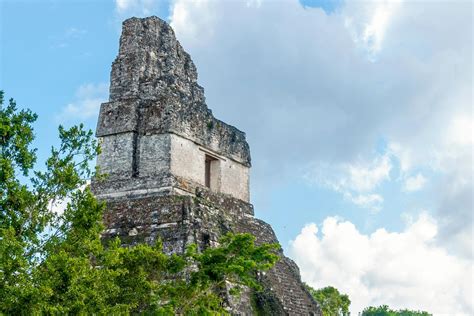Tikal: Eco-Friendly Transportation Options for Exploring the Mayan Ruins
Tikal, a UNESCO World Heritage site and one of the most significant Mayan archaeological sites in the world, draws visitors from across the globe. However, the journey to and around this incredible location presents opportunities to consider your environmental impact. Fortunately, several eco-friendly transportation options exist, allowing you to explore Tikal's wonders while minimizing your carbon footprint. This guide explores the various sustainable ways to reach and navigate this magnificent site, helping you plan a responsible and enriching trip.
How to Get to Tikal: Eco-Conscious Choices
Reaching Tikal itself requires careful planning if you prioritize sustainability. Here are some options:
1. Shuttle Buses:
This is often the most environmentally friendly option for reaching Tikal from nearby towns like Flores or Santa Elena. Shared shuttle buses reduce the number of vehicles on the road compared to individual taxis or rental cars. Look for reputable companies committed to fuel efficiency and responsible tourism practices.
2. Water Taxis:
If you're arriving from Flores, consider a water taxi across Lake Petén Itzá. This scenic route offers a quieter and potentially more sustainable alternative to land transportation, depending on the boat's engine type. Inquire about the boat's fuel efficiency and engine type before booking.
3. Bicycle:
For the adventurous and physically fit, cycling from a nearby town might be an option, although the distances can be significant. This is a highly eco-friendly choice, allowing you to experience the landscape at a slower pace and minimize your environmental impact. However, ensure you have the necessary safety equipment and are prepared for the potential heat and challenging terrain.
4. Walking (Local Areas Only):
Within the immediate vicinity of the Tikal National Park, walking is a fantastic way to explore smaller villages and local communities. This also provides an opportunity to engage with the local culture and appreciate the environment at a personal level.
Getting Around Tikal National Park: Sustainable Transportation
Once inside Tikal National Park, navigating the vast site also requires considering sustainable choices:
1. Walking:
The best way to truly immerse yourself in the atmosphere of Tikal is to walk. Many of the significant temples and structures are within a reasonable walking distance of each other, allowing you to appreciate the details of the architecture and the surrounding jungle at your own pace. Wear comfortable shoes and bring water!
2. Park Shuttles:
Tikal National Park offers shuttle services that transport visitors between key areas within the park. While not as eco-friendly as walking, these shared shuttles are generally less impactful than individual transportation. Check if the park utilizes biofuels or hybrid vehicles.
3. Bike Rentals:
Some tour operators offer bicycle rentals within the park. This provides a good compromise between walking and using shuttles, allowing you to cover more ground at a pace suitable to your fitness level while still being environmentally conscious. Remember to be mindful of the environment and stick to designated trails.
Frequently Asked Questions (PAAs)
What is the best way to get to Tikal from Flores?
The best way to get to Tikal from Flores depends on your priorities. Shuttle buses are generally the most environmentally sound and affordable option. Water taxis offer a scenic alternative, but their environmental impact depends on the boat's engine.
Are there any eco-lodges near Tikal?
Yes, several eco-lodges near Tikal prioritize sustainability. These lodges often employ eco-friendly practices, such as using renewable energy sources and minimizing their environmental impact. Researching and choosing such lodges contributes to sustainable tourism.
How much time should I allocate for exploring Tikal?
You should allocate at least a full day to explore Tikal properly. The site is vast, and there is much to see and appreciate. Consider a guided tour to learn more about the Mayan history and culture.
What is the best time to visit Tikal?
The best time to visit Tikal is during the dry season (November to April) when the weather is favorable for exploring the site. However, the shoulder seasons (May-June and September-October) offer fewer crowds and potentially lower prices.
By making thoughtful choices about transportation, you can enjoy the wonders of Tikal while minimizing your environmental impact and contributing to the preservation of this invaluable historical site for future generations. Remember to research operators and choose those committed to sustainability. Your responsible travel makes a difference!

